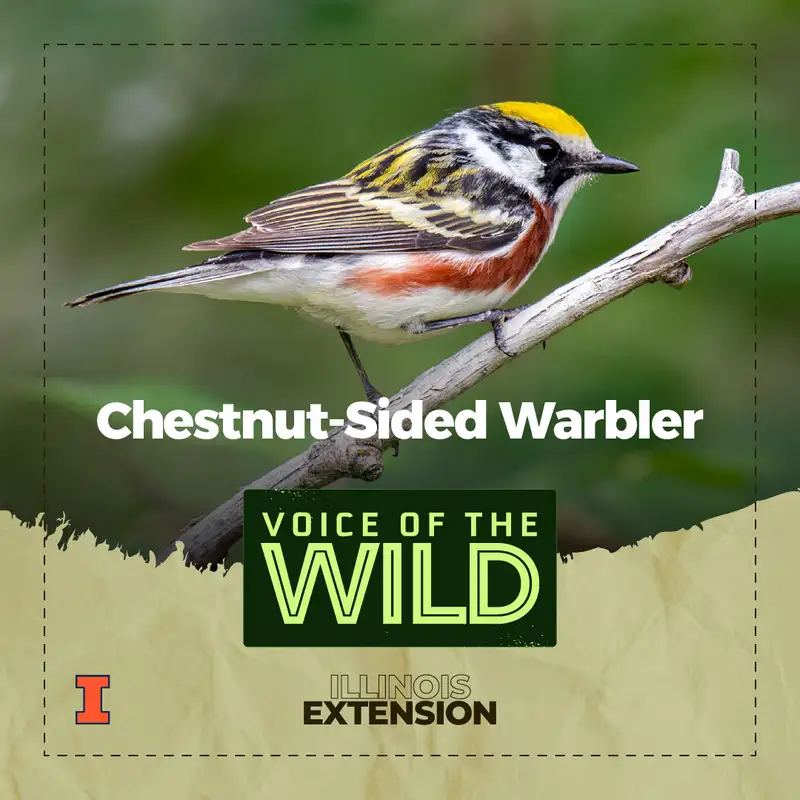 Episode 53
Episode 53
· 03:00
This is Illinois Extension’s Voice of the Wild. A new wild voice in just a moment, so find someplace quiet, take a deep breath, and enjoy.
This warbler tends to shy away from big, healthy forests when choosing a breeding site. Instead they like scrubby, early-succession woods, very similar in structure to the kind of forest growth that comes from too many invasive species and not enough stewardship. That kind of forest is (unfortunately) very common today. As a result, this bird is the exception that proves the rule; one of the few warblers whose numbers have likely grown since the pre-colonial era.
While their success is the result of degrading forest health, they’re nonetheless a beautiful and unique bird; one with plenty of gestalt; not only from their unique coloration; chestnut flanks in the spring and a lemon-lime cap in the fall, but also from the way they goes about their business; tending to hold their tail up and wings drooped. They’re a great warbler for beginners trying to learn the complex world wood warbler ID; once you learn this one, it’s easy to separate them out from the rest of the crowd.
This is the chestnut-sided warbler (Setophaga pensylvanica) from the family of the wood warblers, parulidae
The chestnut sided warbler is said to be “pleased pleased pleased to meet you”. Though they’ll sometimes sing small variations of this mnemonic. Pause. The chestnut’s song and call can sound somewhat similar to the yellow warbler, though I think the chestnut has a somewhat different cadence and sounds a little less saccharine overall. Briefly, here’s a comparison between the yellow and chestnut sided warblers, first the yellow and now the chestnut. Altogether now, here’s the chestnut sided warbler again.
Thank you to the Macaulay library at the Cornell lab for our bird sounds. And thank you for tuning in to learn a new wild voice with Illinois Extension.
Listen to Voice of the Wild using one of many popular podcasting apps or directories.